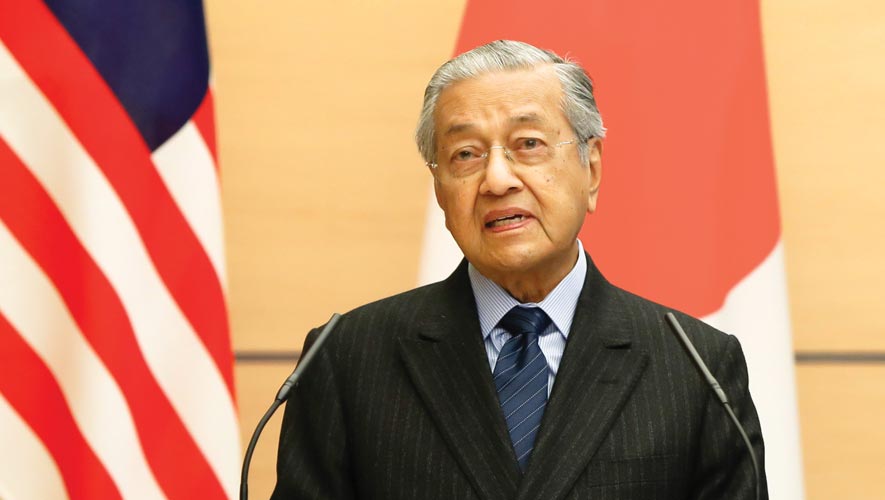Malaysian Prime Minister Dr Mahathir Mohamad might have struck gold in his idea of bringing the earlier botched East Asia Economic Caucus (EAEC) into fruition through a common East Asian currency pegged to precious metal.
For the latest Cambodian Business news, visit Khmer Times Business
He mooted the idea in Tokyo last week saying the common currency could be used to settle imports and exports because it is a stable commodity, but would not be used for domestic transactions.
Mahathir said local currencies were all affected by external factors and were manipulated. It is a well-known fact that Mahathir at one time was critical of George Soros, who was accused of manipulating currencies in the region.
He says that settlements can be made using the (new) currency and the currency must relate to the local currency as to the exchange rate and that is something that can be related to the performance of the country.
He also says such a currency would help grow intra-trade in the East Asian region as it will guarantee the solvency of the trading partners.
With Mahathir linking the idea of the currency to an economically stronger East Asia, we believe this is an opportune moment for the Malaysian Prime Minister to use the common trading currency to pave the way for the realisation of the EAEC.
The EAEC was proposed by Mahathir in 1997 but abandoned following Japan’s refusal to join because of the exclusion of Western nations which were already members of Asia Pacific Economic Cooperation (APEC) and many other notable capitals in East Asia.
EAEC was basically an APEC without North America and Australia. It was never put into action but with Asean+3 which includes Australia, New Zealand, and India meeting during the East Asia Summit this year, it might be the best time for Mahathir to push the idea.
Japan, closely allied to the US, did not join Mahathir’s caucus although Malaysia was committed to have Tokyo as the leading power of the organisation, and was deeply linked to trade with other nations not included in the agenda. Altogether, South Korea was not happy that Japan was placed at the centre of the proposed East Asian platform.
It is apparent that the idea of the revival of the EAEC is to rebalance the lopsided geopolitical game in Southeast Asia. This is imperative as Asean countries are trying hard to resolve the simmering conflict in the South China Sea
There are, however, similarities with the EAEC and the Regional Comprehensive Economic Partnership (RCEP) and if the members of both groupings are more or less the same, why are there so many economic groupings?
RCEP is seen as a Chinese led initiative and surely it is only to be expected that China will dominate the grouping and that could be at the exclusion of Asean interest.
With the EAEC and the common trading currency, it is likely that it would be a trade pact where Asean members would have greater say.
Another trade pact which is still work in progress is the Comprehensive and Progressive Agreement on the Trans-Pacific Partnership (CPTPP) which is likely to see US dominance if it decides to join in later.
With two economic powers helming each of the trade pacts, it could be detrimental to Asean countries which is likely to be vulnerable to the vagaries and dictates of the two large superpowers.
The offers of a common currency based on gold could make the idea of an EAEC a tempting offer unless the countries picked to join the union are not on the same wave length on the single trading currency.
Boosted by the idea of the currency, the idea of an EAEC is likely to succeed in averting the intense rivalry between the two large superpowers from spilling into Asean. In addition to stable trading currency, Southeast Asia might be able to avoid the nightmare of the financial crisis that it experienced in the 90s.
The unity of Asean rests in its centrality and a Mahathir led EAEC with the common trading currency might prove to be the answer to keeping the movement’s integrity intact.
Sathish Govind is a Contributing Writer, Capital Cambodia
an ex-analyst in a think tank in Malaysia




